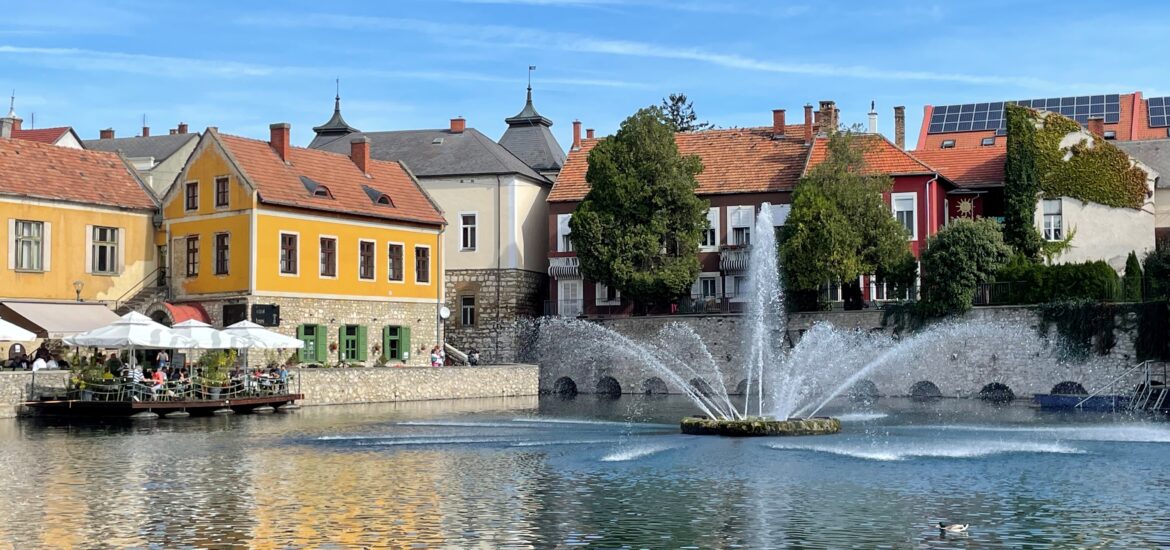It was a great experience to make a round trip through Hungary in October. From thermal spas and fine Baroque architecture to dense forests and endless pusztas, this country appeared to be a marvelous travel destination.
Apart from the highlights of Budapest (see DISCOVER BUDAPEST, PARIS OF THE EAST) and Hortobagyi National Park (see HORTOBAGY: A CARRIAGE TOUR THROUGH THE HUNGARIAN PUSZTA) , we visited many beautiful places all over Hungary. It is impossible to mention all of them, but I would like to give you an idea about the most amazing places we have visited.
TAPOLCA
Located in the western part of Hungary, Tapolca (15,000 inhabitants) is a cute little town close to Lake Balaton and surrounded by green hills.
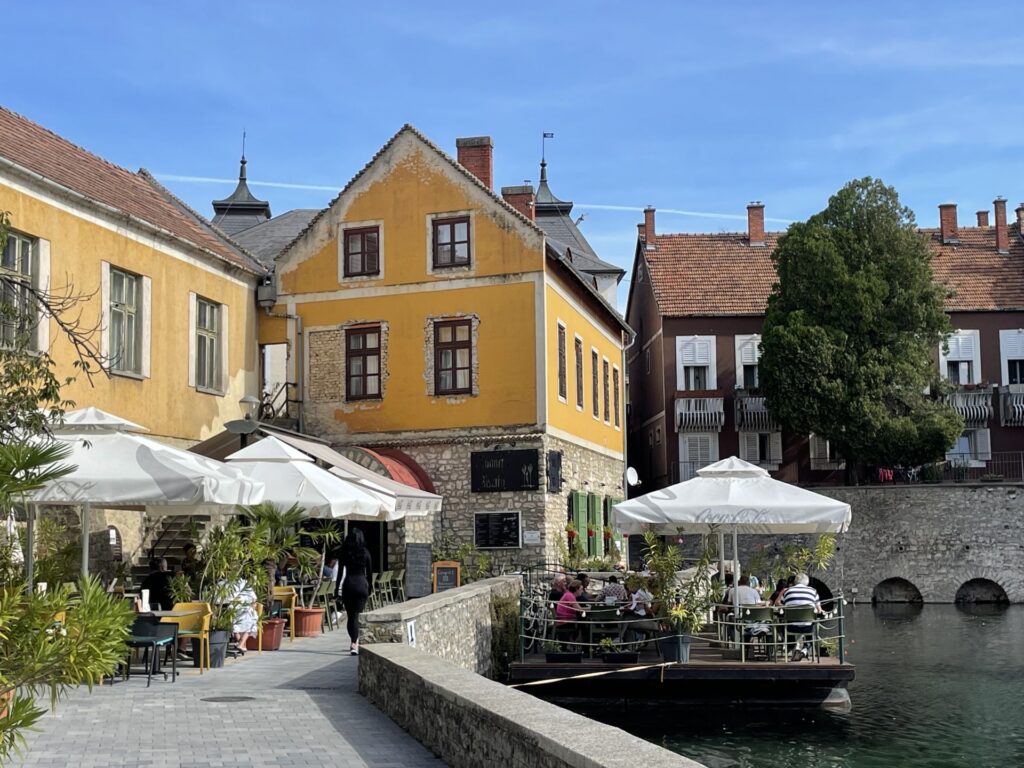
Arriving in Tapolca, we were quite surprised to see lots of tourists, all waiting in a long queue for a visit to the most famous attraction of the town: a 2.5 km long cave system. Although the tour was promising, as it also included a ride with a small boat to explore the cave (10 minutes), we decided to skip it, thus avoiding the crowds.
Instead, we made a relaxing walk through the center of the town and discovered Malom-tò (in translation Mill Lake or Mill Pond). The Mill Lake was created after damming one of the numerous springs and brooks in the area, in the late 1800s. The water temperature is 18°C, when it springs up – which means that it does not freeze in winter.
We spotted some nice pubs and restaurants with open-air terraces around the lake – perfect for tasting the famous Hungarian goulash!
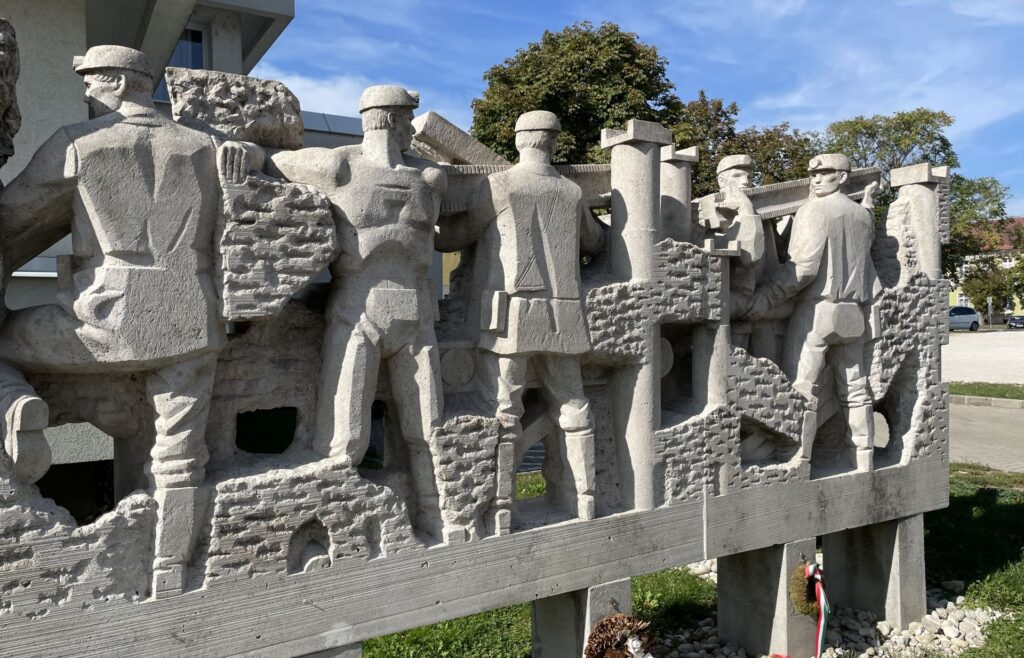
After lunch we made a walk around the lake. In a small park nearby we found a wonderful sculpture, the „Four Seasons“, made by Laszlo Marton. An impressive monument dedicated to the Bauxit Miners in the town center was also made by this sculptor, who was born in this town.
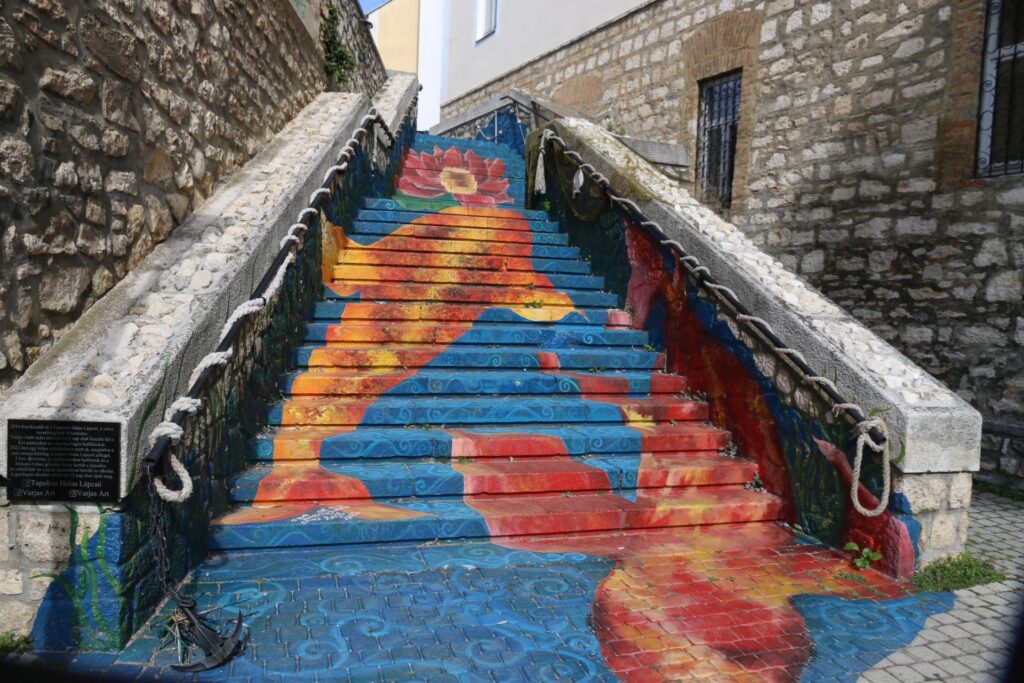
After admiring the street art on the stairs behind the lake (called Fish Stairs), we took a rest on a bench on the lake bank. The water was full of huge Kai carps and ducks and a romantic water mill completed the picture.
VESZPREM
Veszprem, also called the „City of Queens“, is one of Hungary’s hidden treasures with winding streets, Baroque buildings and romantic corners. As we arrived late, we had some problems in finding our hotel, but the first thing we saw next morning was the Castle, standing on a hill in the middle of the town and ready to be explored.
Maybe you would expect a classical medieval stone building, but instead this Castle is surrounded by a whole quarter of Baroque buildings.
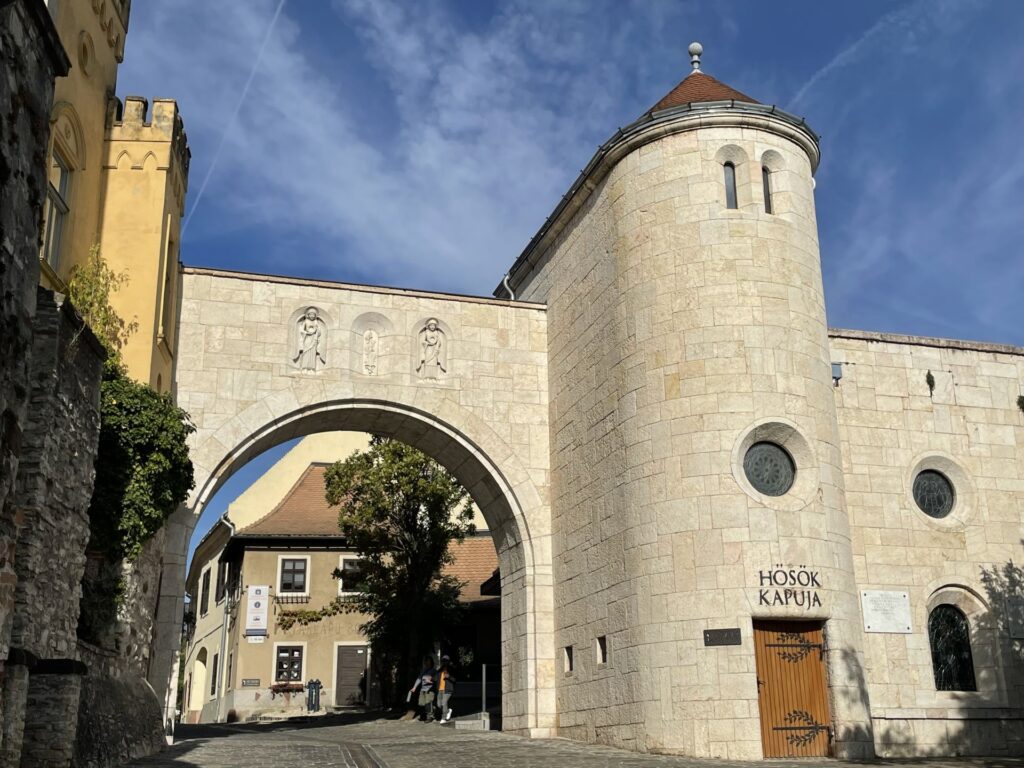
We entered the Castle District through the Heroes’ Gate, built in the mid-1930s. Once erected as a monument dedicated to the memory of victims of World War I and all Hungarian soldiers, the Gate was renovated and reopened in 2014.
Turning westward, we found the Fire Watch Tower, one of the town’s symbols. It was originally raised to protect the castle’s gate.
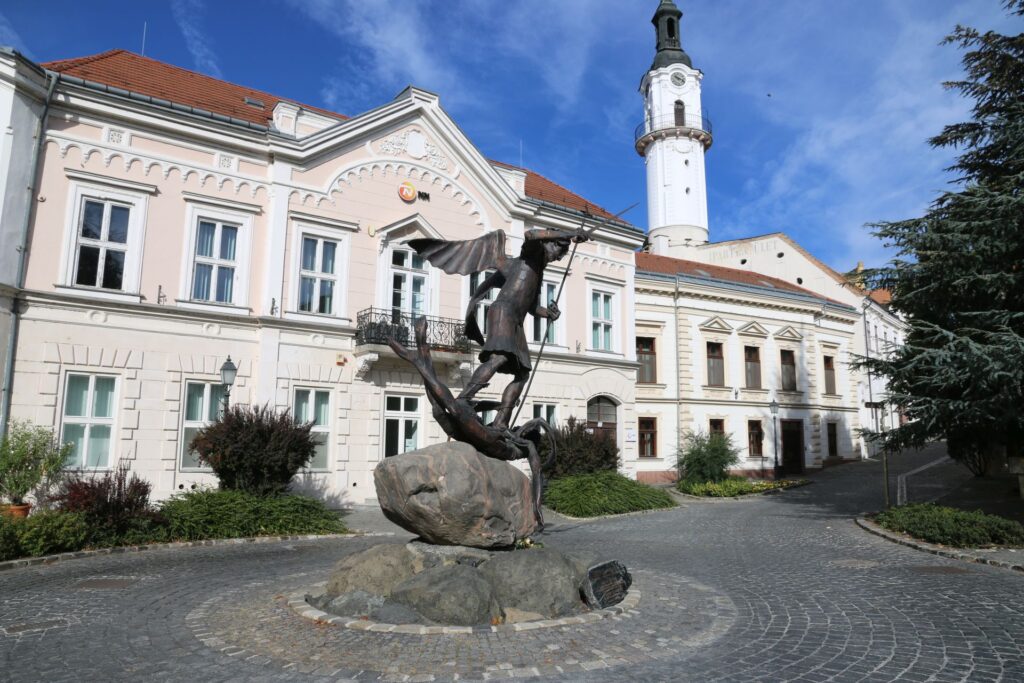
The heart of the Castle District consists of the St. Michael’s Cathedral, a small square with the Trinity Statue, the Archbishop’s Palace and the Gisela Chapel.
The statues of St. Stephen and his wife Blessed Gisela – the first Hungarian royal couple – rise above the old town at the end of the street. The statue was erected in 1938. From this location we could enjoy a beautiful panorama of the Bakony Mountains and the town itself.
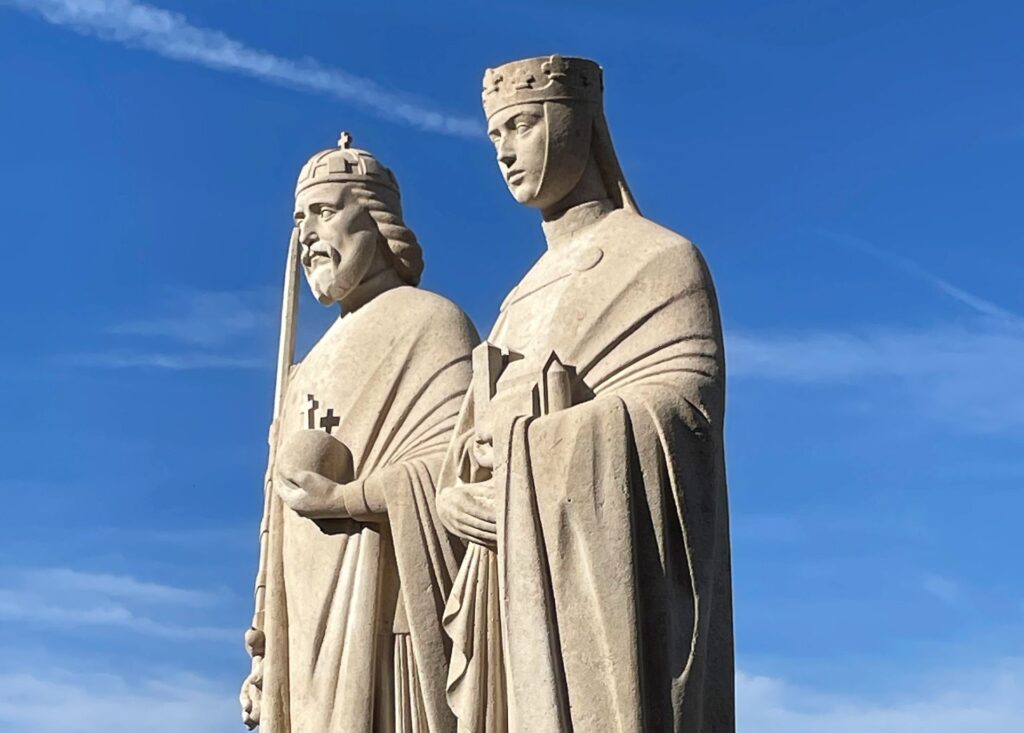
Returning from the Castle District, we visited the old town with the octagonal Ovaros Square and the Rakoczi Ferenc Street, presenting a historical image with many Baroque houses.
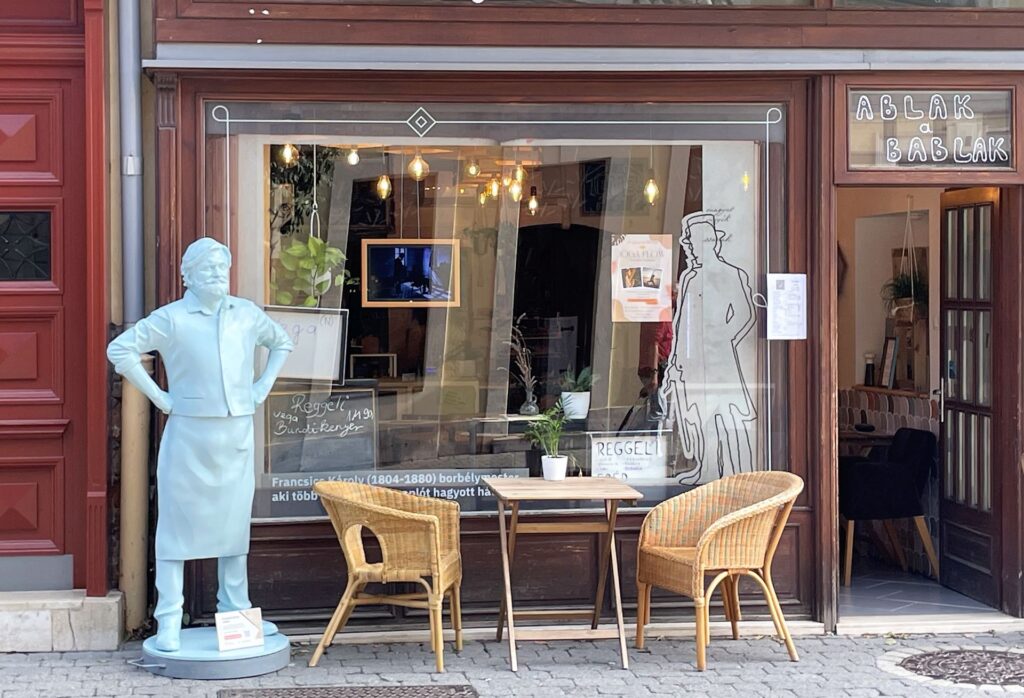
Here we found several attractive pubs and restaurants. At the open-air terrace of one of them, we enjoyed a cup of coffee, listening to a group of young musicians playing jazz on the street corner.
SOPRON
Sopron is one of the most beautiful towns in Hungary. It is located in the most western part of the country, close to the Austrian border. In Roman times it was known as the walled city of Scarbantia.
When the Hungarian King Ladislaus IV arrived at the city with his armies, the city opened its gates and the King rewarded Sopron with the rank of „free royal town“.
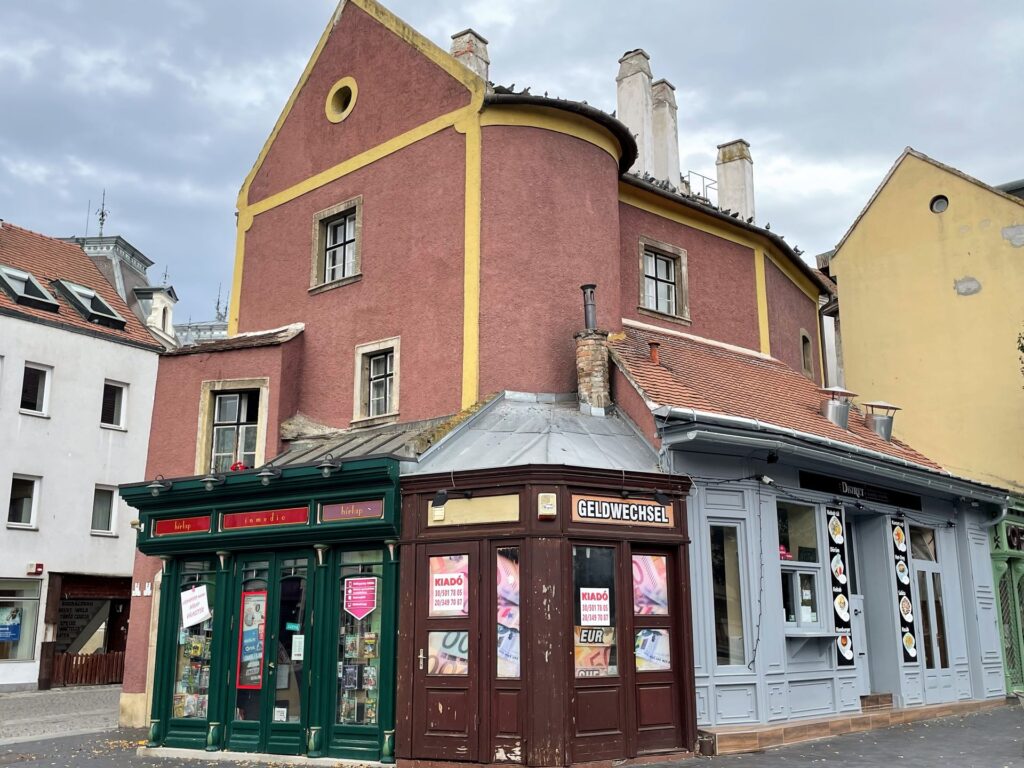
During the early part of the 20th century, the region was settled by Germans and Sopron became known as Odenburg. After World War I the region of northwestern Hungary was given to Austria. But the local people did not welcome this – a plebiscite was held in 1921 and Sopron voted to remain Hungarian. This gave the town the status of „most loyal town in Hungary“.
Nowadays, Sopron has 63,000 inhabitants and it is very popular as a destination for day trips from Vienna and Budapest. However, it has also become known as the „dental capital of the world“ as it offers first-class (and affordable) dental treatment.
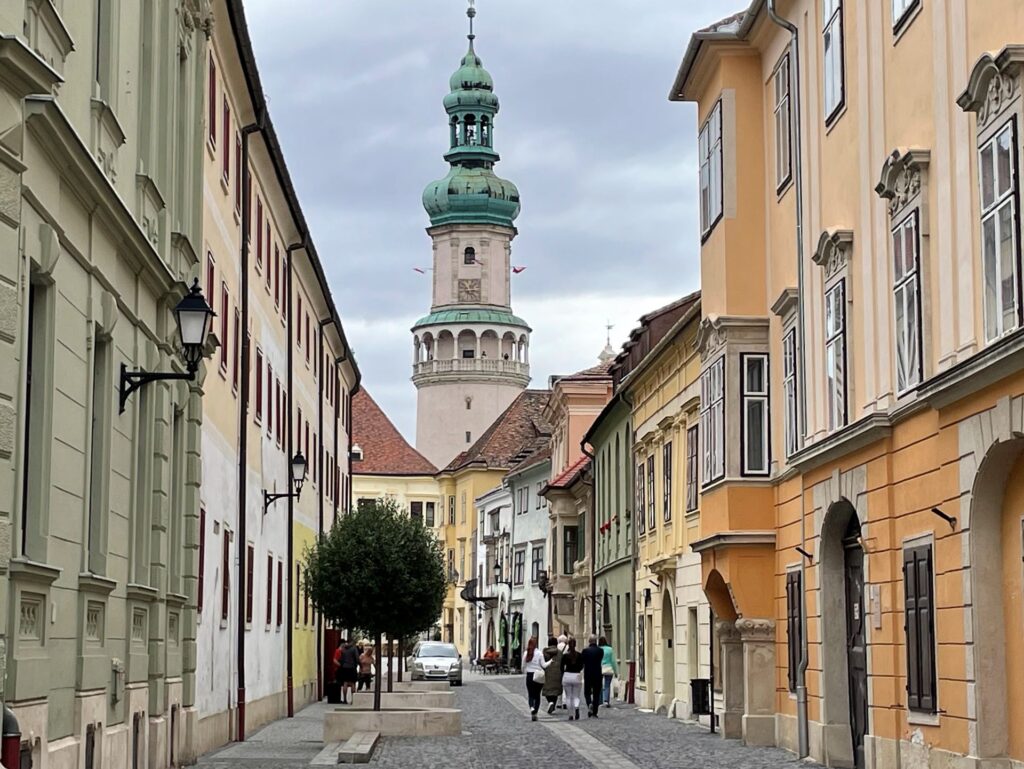
And I must say: our visit to Sopron was a real eye-opener. It was a great experience to explore the old Castle District: its Baroque square with cobblestone streets, fascinating medieval houses, wine taverns, churches, Renaissance architecture and the old Roman archeological site in the center of the town.
As Sopron has been a walled city for a long time, the medieval walls seen today were built over the remnants of ancient Roman walls. We walked along sections of the walls on the Bailey Promenade, a path that passes between houses and the walls.
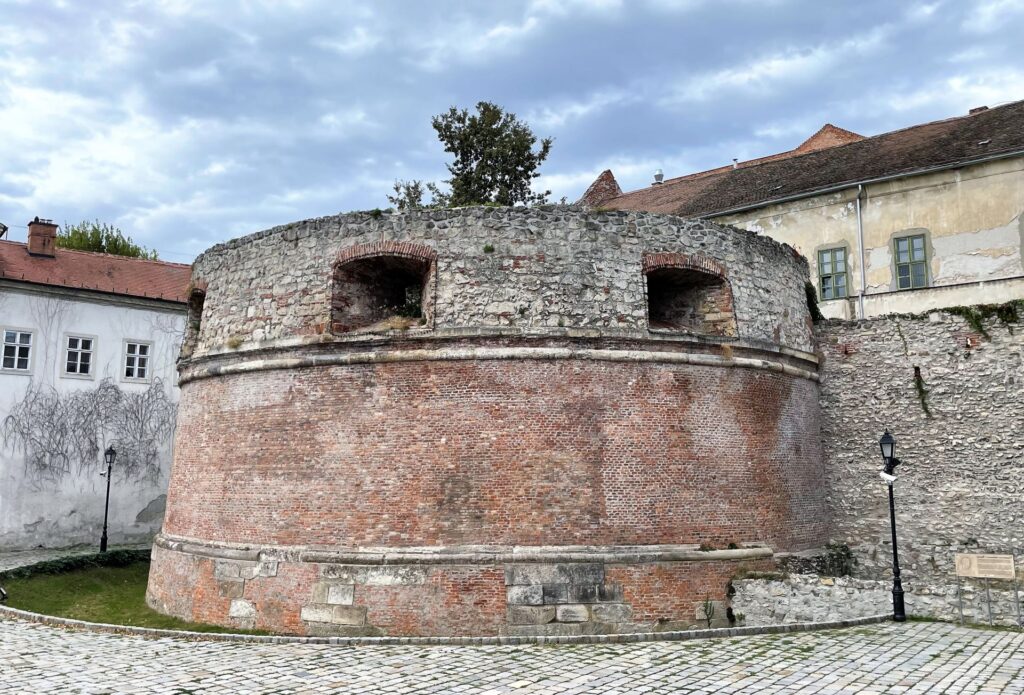
Located on the Main Square is the most important attraction of Sopron: the Fire Watch Tower (58 m high). A long time ago, watchmen used to stand on the balcony to warn the people of encroaching fires and potential enemies. The tower stands on Roman foundations, its balcony and clock tower are Renaissance and its dome is Baroque.
PÁPA
Did you ever hear about Pápa? We made a short break in this little town close to Sopron without being aware of the beauty and the cozy atmosphere of this place.
Pápa (32,000 inhabitants) has been the center of the Transdanubian Reformed Church since 1531 and spirituality has always had a significant role in the life of its citizens. Due to the multitude of heritage buildings, the town center is now protected.
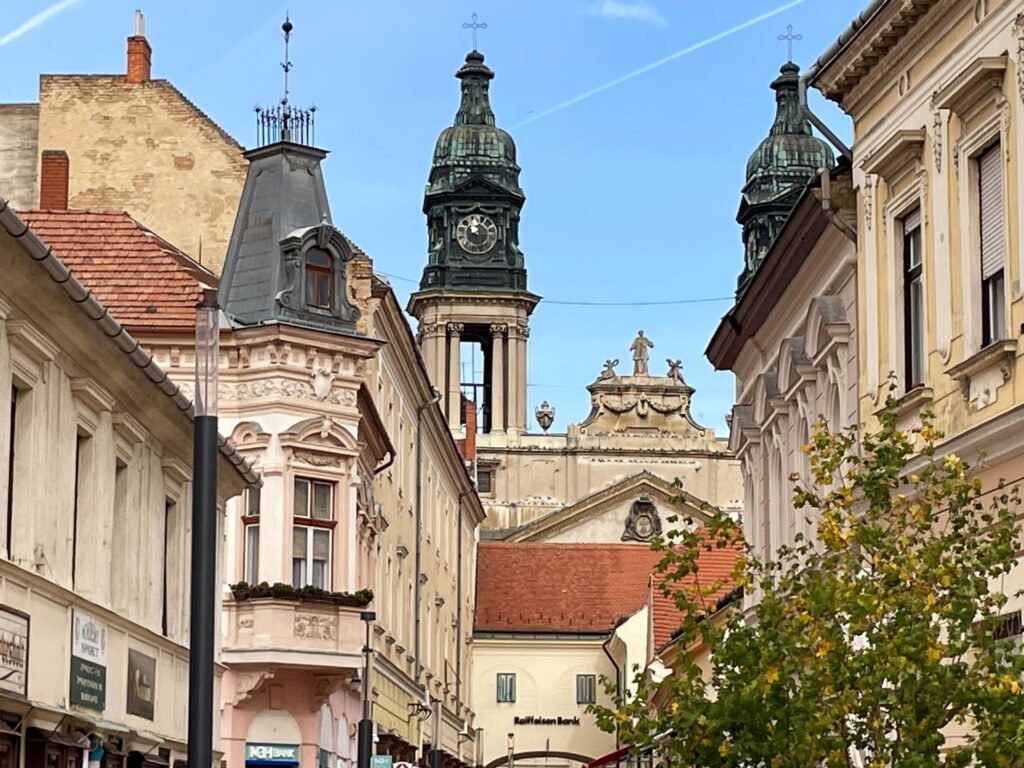
Pápa is also known for the fact that it was the home town of many Jews. More than 5,000 Jews were deported to Auschwitz in 1944 and less than 10% returned. Nowadays, there are no Jews left in Pápa….
We made a walk through the town center, which was neat and cozy, with colorful houses and useable phone booths in nice streets.
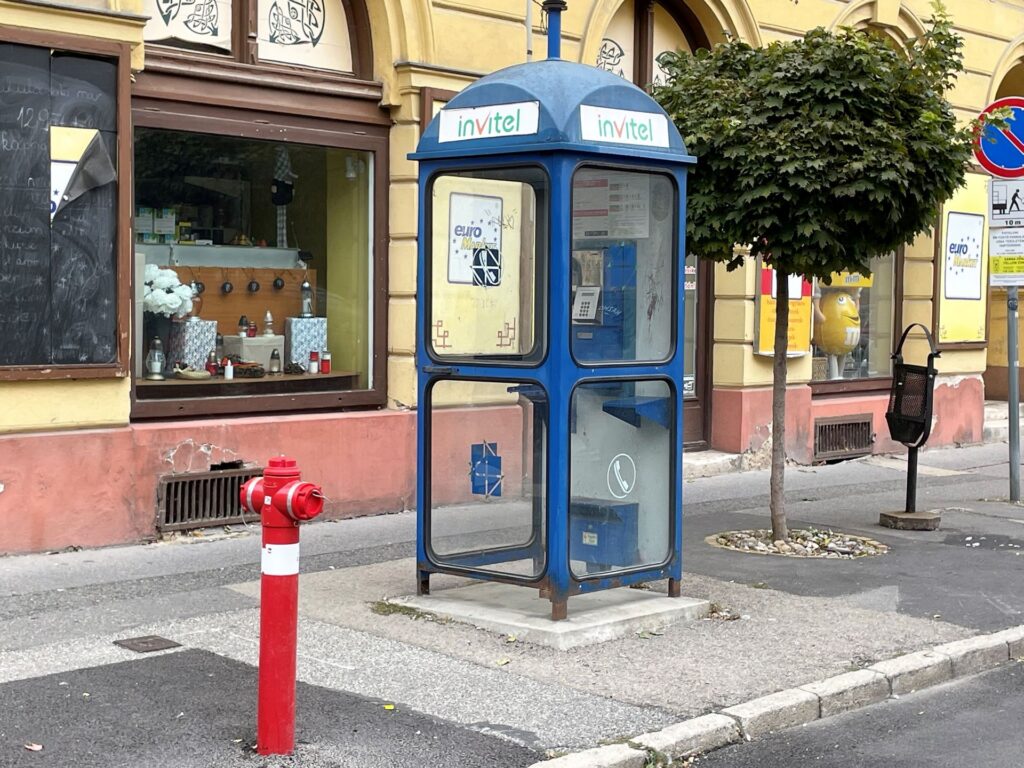
Unfortunately, we could not visit the Esterhazy Castle, a Baroque masterpiece from the 18th century, as it was closed. This Baroque palace was rebuilt by Ferenc Esterhazy by modifying a castle that had been built in the 15th century. Guarded by statues of two lions and surrounded by a beautiful park, the castle looks very attractive.
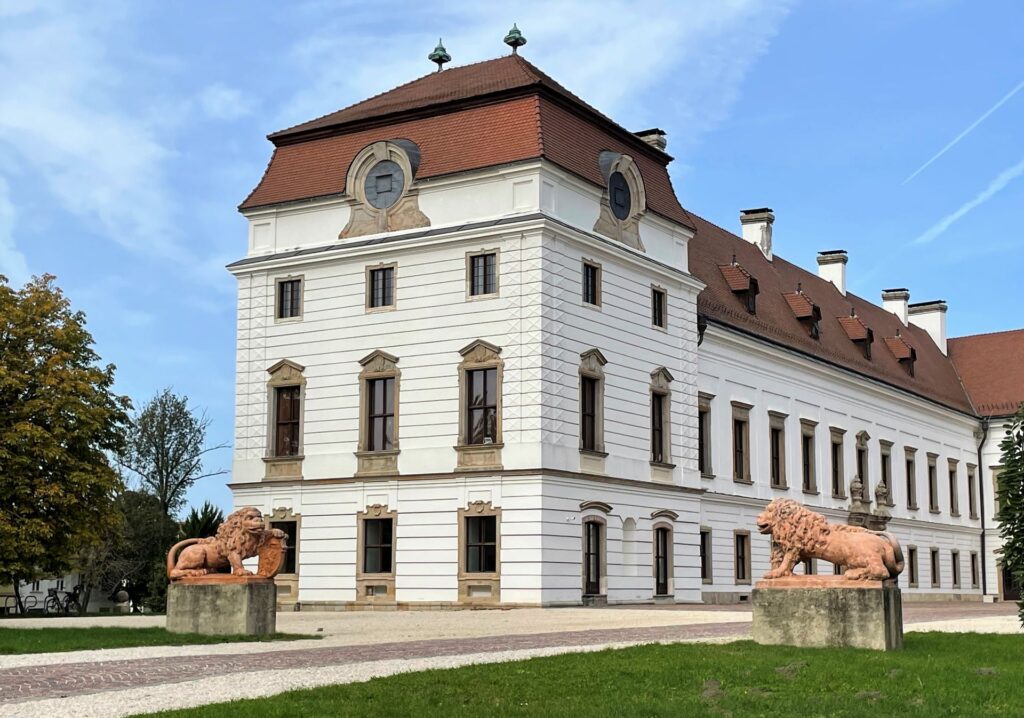
By the way, when you visit Hungary, you should take into account that most museums and tourist attractions are closed on Mondays!
HOLLÓKÖ
The village of Hollókö is located in a valley in the Cserhat mountains, in Northern Hungary. We were keen on visiting this place, as it is listed as a UNESCO World Heritage site. It is currently the only Hungarian settlement, whose residents still use their houses as they did in the past century.
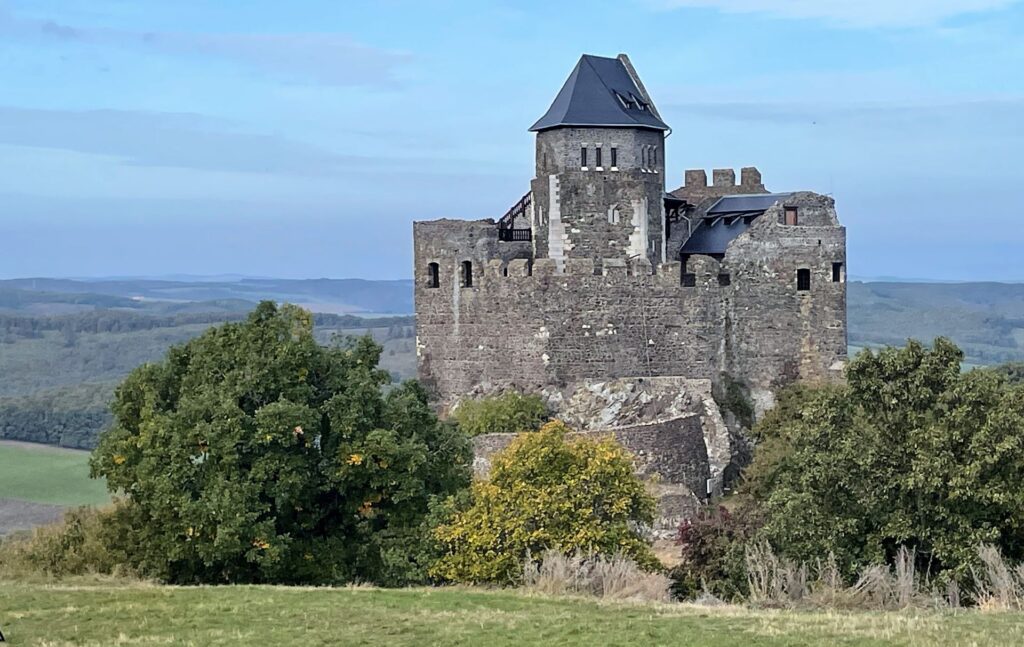
There is a legend about the village: its story began in the 13th century, when the Castle was constructed following the Tatar invasion. A romantic legend is attached to the Castle that people still consider to be true: it says that the lord who built the Castle kidnapped the beautiful wife of the neighboring squire. However, the girl’s nanny was a witch and was on good terms with the devil, convincing him to turn his sons into ravens, who then stole the stones from the Castle until the woman was finally set free. The stolen stones were used to build a new castle, which is why the medieval fort was given the name Hollókö, which stands for Ravenstone. No wonder that a raven statue is prominent at the entrance of the village!
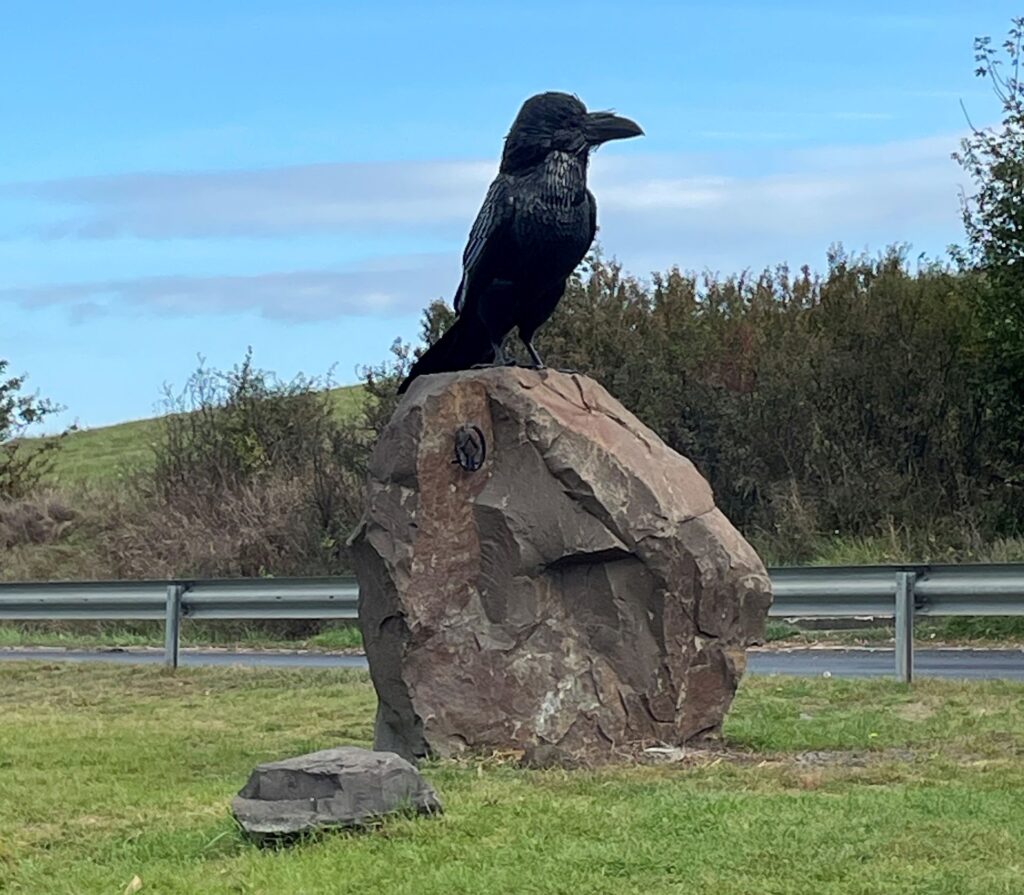
Honestly speaking, it was not so easy to find Hollókö, as the information boards were only in Hungarian (a difficult language indeed!), but after asking some local people, we found the picturesque one-street village. The houses were originally made of wood and straw, but after numerous fires the residents switched to mudbricks and tiled roofs, although they still have the traditional Palosz folk architectural forms. Nowadays, there are 67 houses, a church and many small museums.
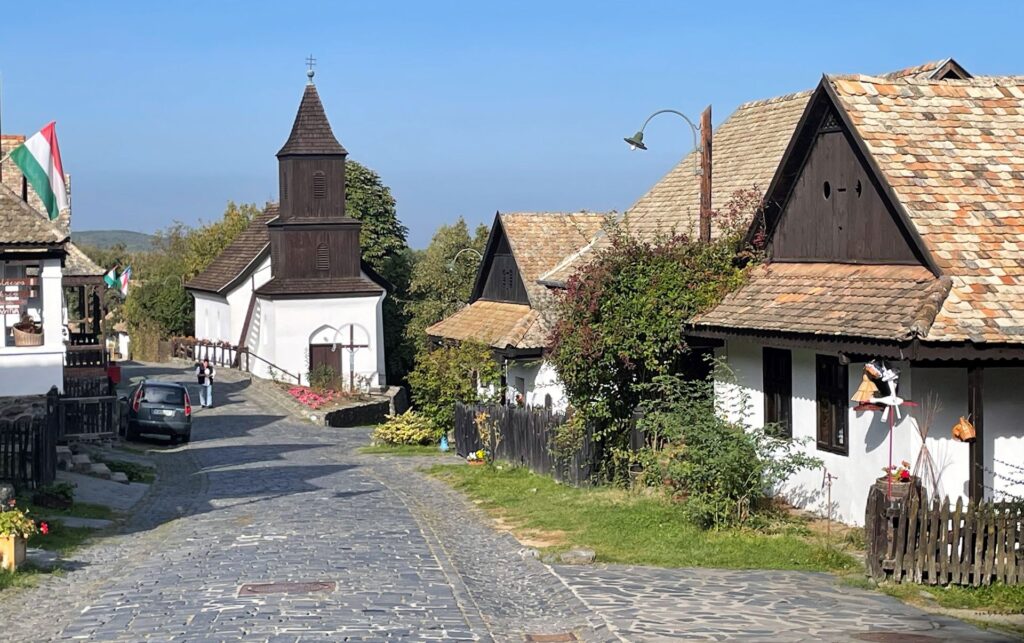
I am sure that Hollókö is overloaded with tourists in the summer season, but this time we had the village all for ourselves and we really enjoyed the walk along the picturesque houses, decorated with flowers and traditional farm tools.
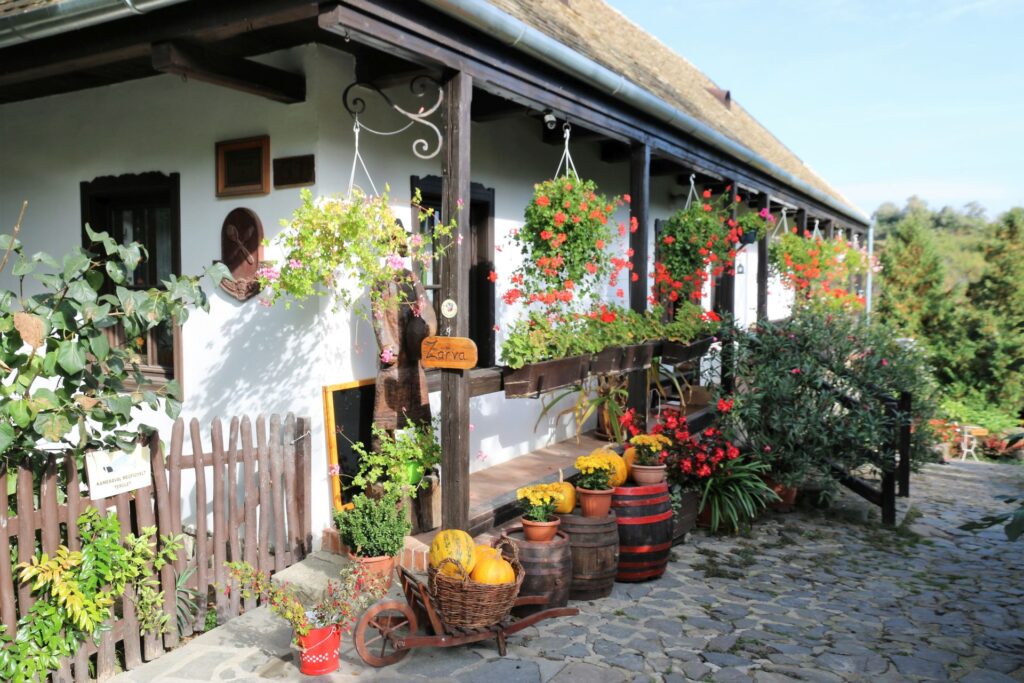
And this round trip through Hungary convinced us once more that October is a perfect month for traveling!
